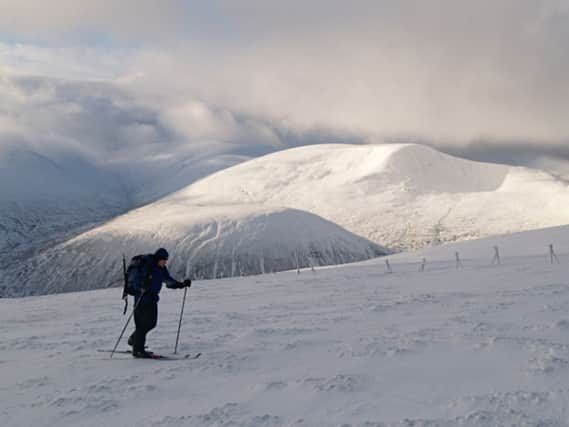Roger Cox: New book sheds light on Gaelic names


John Murray’s new book Reading the Gaelic Landscape begins with a short but heartbreaking story. After enjoying a walk near Drumbeg in Sutherland one afternoon, the author noticed a sign beside a croft saying that the owner’s family had lived there for more than 150 years. Smitten with the poetic place names he had just encountered on his stroll – including Poll nam Muc (Pool of the Pigs) and Loch Bad an Òig (Loch of the Spot/Thicket of Youth) – he struck up a conversation with the owner and asked if she could tell him anything more about them. In spite of the fact that her family had lived there for several generations, however, the crofter had never heard of these places and could not understand their Gaelic meanings. As Murray puts it, “she had lost touch with the landscape as it had been expressed in the language of her immediate ancestors”.
As Murray goes on to explain, this sense of dislocation from the nomenclature of the land is something common to most modern Scots. The Gaelic language is still spoken by nearly 60,000 people according to the 2011 census, but many of them live on the Western Isles and on Skye, where, paradoxically, the names of the hills, rivers and valleys tend to have Norse roots. The Highlands, meanwhile, are a treasure trove of evocative Gaelic place names, and yet only a tiny proportion of the people who live there – and a similarly tiny proportion of the people who live in the rest of the country – are able to make sense of them.
Advertisement
Hide AdAdvertisement
Hide AdAs a result, Scotland must be one of the few countries where the majority of the inhabitants are forced to navigate using maps written in what might as well be a foreign language.
The goal of Murray’s book is to help set this right, and he goes about achieving it not by offering a simple list of translations into English or Scots, but by, as he puts it, “building a framework for organising such knowledge”. It’s only a shade over 200 pages long, yet the scope of the book is admirably broad, with primers on the history of the Gaelic language in Scotland, how the first maps of the country came to be made, and how the Gaelic speakers of old would have conceptualised things like colours and sounds, seasons and time.
Knowing that the English translation of Meall na Samhna, (north of Glen Dochart) is Rounded Hill of Hallowtide, for example, doesn’t really tell you very much about anything, unless you also know that Hallowtide, or the Feast of Samhain, was a sort of Harvest Festival that marked the beginning of the darker part of the year. Know, too, that the people who gave the hill its name may still have lived a semi-nomadic lifestyle, moving from one place to another with the changing seasons, and suddenly you have a name rich with cultural significance.
I could have done with a copy of Murray’s book a couple of weeks ago, during a combined hiking and snowboarding microadventure in Drumochter Pass. Finding your way around in a whiteout can be tricky at the best of times, but when you’re in a party that consists of two Munro-baggers looking to tick off as many tops as they can in the time available, and two snowboarders more interested in finding north-facing snowfields to slide down, things get even more complicated.
Inevitably, there were occasions when the Munroists wanted to tick off another summit while we snowboarders just wanted to get more turns in, but how do you have a sensible conversation about setting up a meeting point when none of the people in your party (two Scots, one Canadian and one Englishman) can pronounce A’ Bhuidheanach Bheag or Meall a Chaorainn? If we’d had a copy of Reading the Gaelic Landscape handy, we wouldn’t have had to resort to calling them “that one” and “the other one” and – more importantly – we would have known that the former hill’s name means “Little Yellow Place” (thought to refer to the coarse yellow grass which grows on its slopes) while the latter’s name means “rounded hill of the rowan”.
Not much of an aid to navigation, perhaps, but when the mist’s so thick you can only see a few feet in front of you, it’s nice to be able to imagine what the view might be like on a clear day.
Reading the Gaelic Landscape is published by Whittles, £16.99